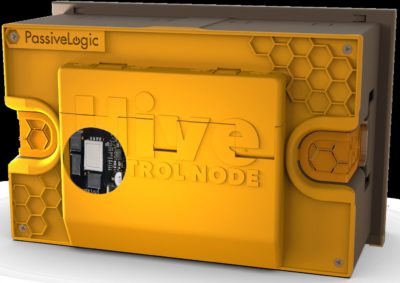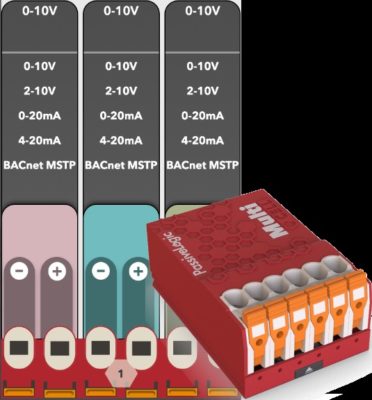Beta testing is a common practice for intangible products like software. Release an application, let customers bang on it, put bug fixes into the next version for download onto devices. Repeat.
For brick-and-mortar products like buildings, beta testing is unusual if not unheard of. But two Salt Lake City entrepreneurs now offer a system that evaluates buildings while in development.
PassiveLogic CEO Troy Harvey says this could solve a lot of problems before construction begins. “If you’re an engineer, there’s this is kind of a crazy idea to go and build the first one without beta testing it, and to just hope it works out,” he said.

Harvey and Jeremy Fillingim in 2014 founded PassiveLogic, an AI platform to engineer and autonomously operate all the Internet of Things components of buildings.
PassiveLogic’s Hive system — the startup calls it “brains for buildings” — is powered by the energy-sipping, AI-capable Jetson Nano module. The system can also be retrofitted into existing structures.
The Hive can make split-second decisions on controlling buildings by merging data from multiple sensors using sensor fusion algorithms. And it enables automated interpretation and responsiveness for dynamic situations such as lights that brighten but can also add heat to a space or automated window louvers that reduce glare but also cool a room.
New Era for IoT: Jetson
PassiveLogic’s software enables designers and architects to digitally map out the components for the system controls architecture. Contractors and architects can then run AI-driven simulations on IoT systems before starting construction. The simulations are run with neural networks to help optimize for areas such as energy efficiency and comfort.

In addition to the Hive controller for edge computing, the system uses the startup’s half-dollar-size Swarm room sensors and compact Cell modules to connect into building components for hard-wired control.
“With the Jetson Nano, we’re getting all this computing power that we can put right at the edge, and so we can do all these things in AI with a real-time system,” said Harvey.
PassiveLogic’s pioneering application in building AI, edge computing and IoT comes as retailers, manufacturers, municipalities and scores of others are embracing NVIDIA GPU-driven edge computing for autonomy.
 The company is a member of NVIDIA’s Inception program, which helps startups scale markets faster with networking opportunities, technical guidance on GPUs and access to training.
The company is a member of NVIDIA’s Inception program, which helps startups scale markets faster with networking opportunities, technical guidance on GPUs and access to training.
“NVIDIA Inception is offering technical guidance on the capabilities and implementation of Jetson as PassiveLogic prepares to fulfill our backlog of customer demand,” said Harvey. “The capabilities of the Jetson chip open up opportunities for our platform.”
Hive: AI Edge Computing
PassiveLogic’s Hive controllers can bring AI to ordinary edge devices such as closed-caption cameras, lighting, and heating and air conditioning systems. This allows image recognition applications for buildings with cameras and smart temperature controls, among other benefits.
“It becomes a control hub for all of those sensors in the building and all of the controllable things,” said Harvey.
Hive can also factor in where densities of people are in buildings, based on data taken from its networked Swarm devices, which use Bluetooth mesh trilateralization to locate building occupants. It can then adjust temperature, lights or other systems for where people are located.
Digital Twin AI Simulations
The company’s Cell modules — hard-wired, software-defined input-output units — are used to bridge all the physical building connections into its Hive AI edge computing systems. As customers connect these building block-like modules together, they’re also laying the software foundation for what this autonomous system looks like.
PassiveLogic enables customers to digitally lay out building controls and set up simulations within its software platform on Hive. Customers can import CAD designs or sketch them out, including all of the features of a building that need to be monitored.
The AI engine understands at a physics level how buildings components work, and it can run simulations of building systems, taking into account complex interactions, and making control decisions to optimize operation. Next, the Hive compares this optimal control path to actual sensor data, applies machine learning, and gets smarter about operating the building over time.
Whether it’s an existing building getting an update or a design for a new one, customers can run simulations with Hive to see how they can improve energy consumption and comfort.
“Once you plug it in, you can learn onsite and actually build up a unique local-based training using deep learning and compare it with other buildings,” Harvey said.
